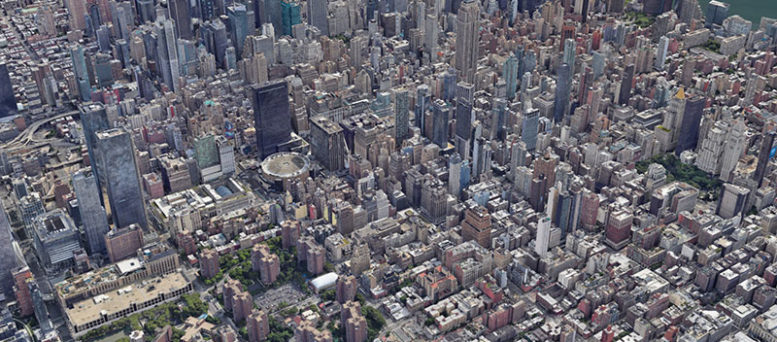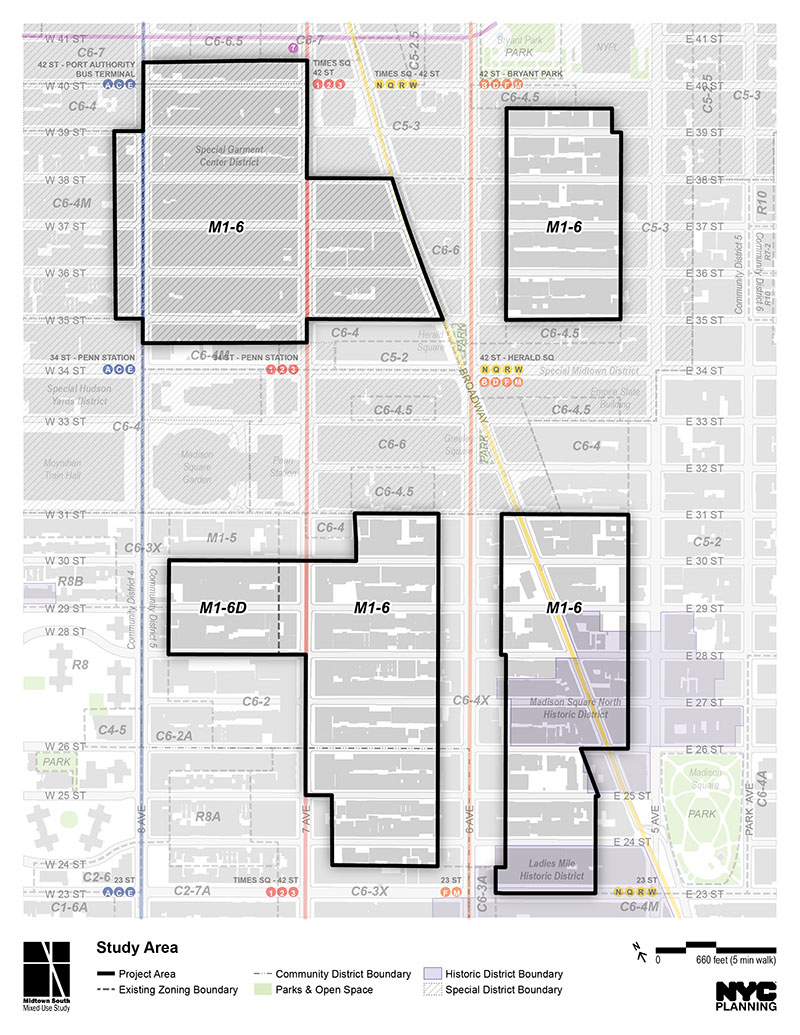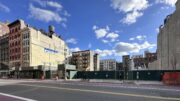Mayor Eric Adams has ushered in the next phase of the Midtown South Neighborhood Action Plan, a community development plan aimed at facilitating the conversion of office properties into multifamily residential buildings. Over time, the plan will update existing zoning rules and administrative hurdles that slow down the process for developers.
While the plan still requires approval by City Council, the Adams administration estimates the creation of 20,000 new homes over the next decade.
“I’ve said it before: New York City is the ‘City of Yes’ and today, we are saying yes to a flourishing economy, yes to thriving business districts, and yes to creating more homes for New Yorkers,” Adams said. “Today, as part of our ‘City of Yes for Housing Opportunity’ plan, we are throwing open the door to more housing with a proposal that will allow us to create as many as 20,000 new homes where the building owner wants to convert offices into housing but needs help cutting through the red tape.”
Formerly known as the Midtown South Mixed-Use Plan, the initiative began with a study area of roughly 42 city blocks. The boundaries of the plan include West 40th Street to the north, West 23rd Street to the south, Fifth Avenue to the east, and Eighth Avenue to the west.
Much of the area remains designated for manufacturing use after more than half a century. Mayor Adams hopes that these changes will yield opportunities for a variety of residential use types beyond market-rate including affordable and supportive housing properties.
While the focus is on vacant or languishing commercial properties, it remains to be seen how this will affect existing small businesses, especially in the historic Garment District.
Subscribe to YIMBY’s daily e-mail
Follow YIMBYgram for real-time photo updates
Like YIMBY on Facebook
Follow YIMBY’s Twitter for the latest in YIMBYnews







In my neighborhood, zoning was changed to reduce housing. In the 1950s, 41 co-op buildings were erected, all being 6 stories with fire escapes. I believe around 1968, the zoning in most of the area was changed to allow only a 40 ft. height and lower density. Row housing is now a typical allowable form, often with concrete front yards. The co-op buildings are all set back and have lawns and gardens and are far more “suburban” than these lower structures and likely provide more housing.
“Affordable housing” is something of a joke as minimum income is often set at 130% of the local median. This often excludes what is considered middle-income people. Even so, the market rate apartments likely have to subsidize these.
The NYT had an excellent article a while ago regarding the complexities of converting buildings to residential. Generally, older office buildings that relied on windows for illumination are the easiest to change. Large floor plate modern offices tend to lack required windows unless a light well is created in the center of the building—something that might be more costly than building anew. The industrial loft buildings of the former Garment District may not be so easy to convert.
Agreed, the zoning of 1964 established the “zones” which now define NYC. In many neighborhoods (including yours it seems) the newer buildings are less dense than the older ones are, thereby reducing the number of buildable units and driving up housing costs.
Agreed on the “affordable housing” misnomer, its really a joke! Also on the older garment center buildings with deep floor plates, the only practical use for them as residential is as open lofts, with sizes of 1,000 – 3,000 SF being the way to go. While fine for luxury housing, it will do close to nothing to address the housing shortage.
Why are we putting immigrant in the most expensive island of the most expensive city in the US with no space. We should be building houses in Nebraska, Wyoming, the Dakotas.
Nah, simply bring BACK the garment district. Just as we did in the past century under the welcoming gaze of our Lady of the Harbor, we can gainfully employ the many migrants once again coming to our city in search of a better life. The lyrics of the old union song comes to mind: Look for the union label when you are buying that coat, dress or blouse. Remember somewhere our union’s sewing, our wages going to feed the kids, and run the house. We work hard, but who’s complaining? Thanks to the I.L.G. we’re paying our way! So always look for the union label, it says we’re able to make it in the U.S.A.!
Bring back the garment business will only happen if Americans are willing to work for Third World wages and benefits, if any. People would rather do other things for more money.
Or willing to pay substantially more for well made high quality fashions we mostly associate with “luxury” instead of the wear it thrice and it falls apart “fast fashion” garbage that dominates for normal working and middle class people. American made t-shirts using union or at minimum living wage workers is a $18-$25 a shirt proposition and most materialistic American consumers are addicted to the notion they should only cost $6-$12.
the majority of those units being built will be for those who already live in that area, its called AFFORDABLE HOUSING SEGREGATION, ALSO KNOWN AS COMMUNITY PREFERENCE, end community preference, which is a racist policy, AFFORDABLE HOUSING? which means higher middle income, which is close to market rate, example 500 units, out of that is only 35 units are so called [AFFORDABLE HOUSING] after 50% community preference, how many units left? 0 to 3, and thousands on top of thousands of applications, there is your 500,000 moon shot
Hundreds of thousands of people no longer come into the City and it’s decimating retail, restaurants and office buildings. Look up at night and see all the demolished office floors in most buildings. My building keeps losing tenants. Work from home is a disaster.
The only hope is to bring more housing into the City to save it, and we’re running out of time.
Speaking of junk clothes, there is also the creeping return of polyester (now called “stretch”). Like wearing a wetsuit.
Late 80s/early 90s florescent spandex are coming back! Everyone thinks they’re Puck from Real World or Richard Simmons.
The chicas are also wearing mom jeans again pulled up higher than Steve Urkels tighty whities!
Just found this site!!! It’s great!! Glad I found it!! Excellent work!!!